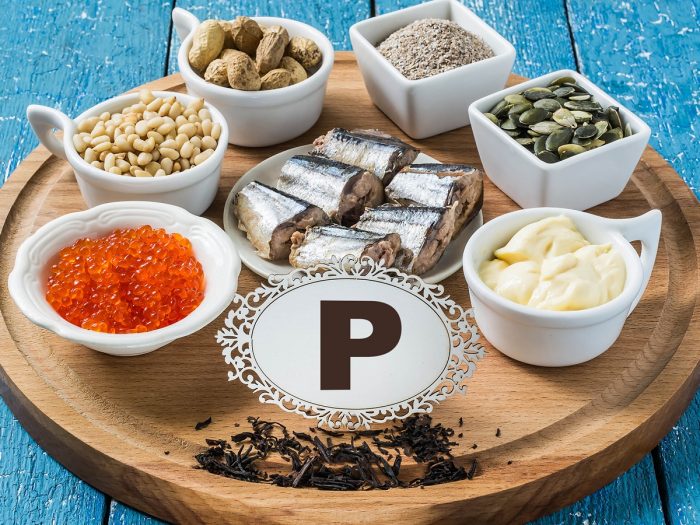Phosphorus is the second most abundant mineral in the body. It is important for the growth and repair of cells and tissues. It is found in all cells in body, 85% of it is found in bones and teeth. It provides structure to bones and teeth along with calcium. It is a part of a compound phosphate, which is part of the molecule adenosine triphosphate (ATP). Phosphorous neutralizes acids in blood to regulate pH. Sources include high protein foods like meats, fish, nuts, legumes, but also grains.
Quick Facts
-Second most abundant mineral in the body [129]
-Growth and repair of cells and tissues
-Found in all cells in body, 85% in bones and teeth
-Provides structure to bones and teeth along with calcium
-Found often in a compound called phosphate, which is part of the molecule adenosine triphosphate (ATP). When a phosphate group is broken off of ATP, it releases energy
-Neutralizes acids in blood to regulate pH
[78]
RDI
Males 19 – 30 yrs: 700 mg
Females 19 – 30 yrs: 700 mg
[128]
Deficiency
-Uncommon
-Symptoms include bone pain, anxiety, fatigue, irregular breathing, irritability, joint stiffness, numbness, weakness, and changes in body weight [198]
Toxicity
-Upper limit is recommended to be 3,000 – 4,000 mg / day
-Rare in healthy people
-High levels of phosphorus in the blood has been associated with increased risk of cardiovascular risk, increases risk of kidney disease, cardiovascular problems, and heart failure [199]
Sources
High protein sources include meats, fish, nuts, legumes, but also grains [78]


